As an extension and partial answer to my thread I wrote a simple algorithm that given a set of points(with xy coordinates) can form a non self-intersecting polygon.
Claim: Given an arbitrary set of points with different coordinates it is always possible to construct a regular or irregular, non self-intersecting polygon.
The algorithm:
Assume there is a set V containing all the vertices
1) Sort all vertices in V by x-coordinate
2) Imagine a straight line (we'll call that "the divider") parallel to the x-axis which starting from the first node expands to infinity and divides/splits the vertices into two sets.
3) Now consider the two sets:
A = The set of all vertices above or on the divider line
B = The set of all remaining vertices
4) Starting at the leftmost vertex of A connect all vertices in A until you get to the rightmost
5) If the rightmost vertex of the sorted set V (the vertex with the biggest x coordinate) is not in A connect that last vertex (rightmost of A) with it.
6) Work backwards and starting from the rightmost vertex of the sorted set V (the vertex with the biggest x coordinate) connect all the vertices that are in B
7)Connect the first (leftmost vertex of B) vertex of B with the leftmost vertex of A
I think that the algorithm is correct and can't find a test that it would fail but maybe I'm missing something.
I would appreciate it if you could have a look and give me an example that wouldn't work if there is any(which I'm sure there must be).
